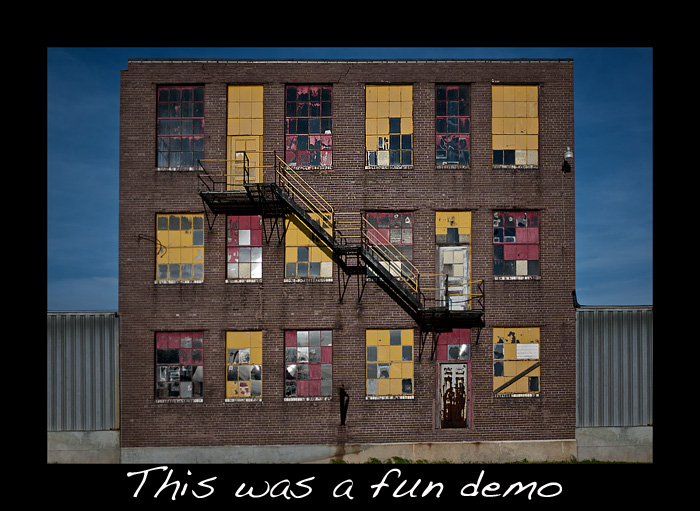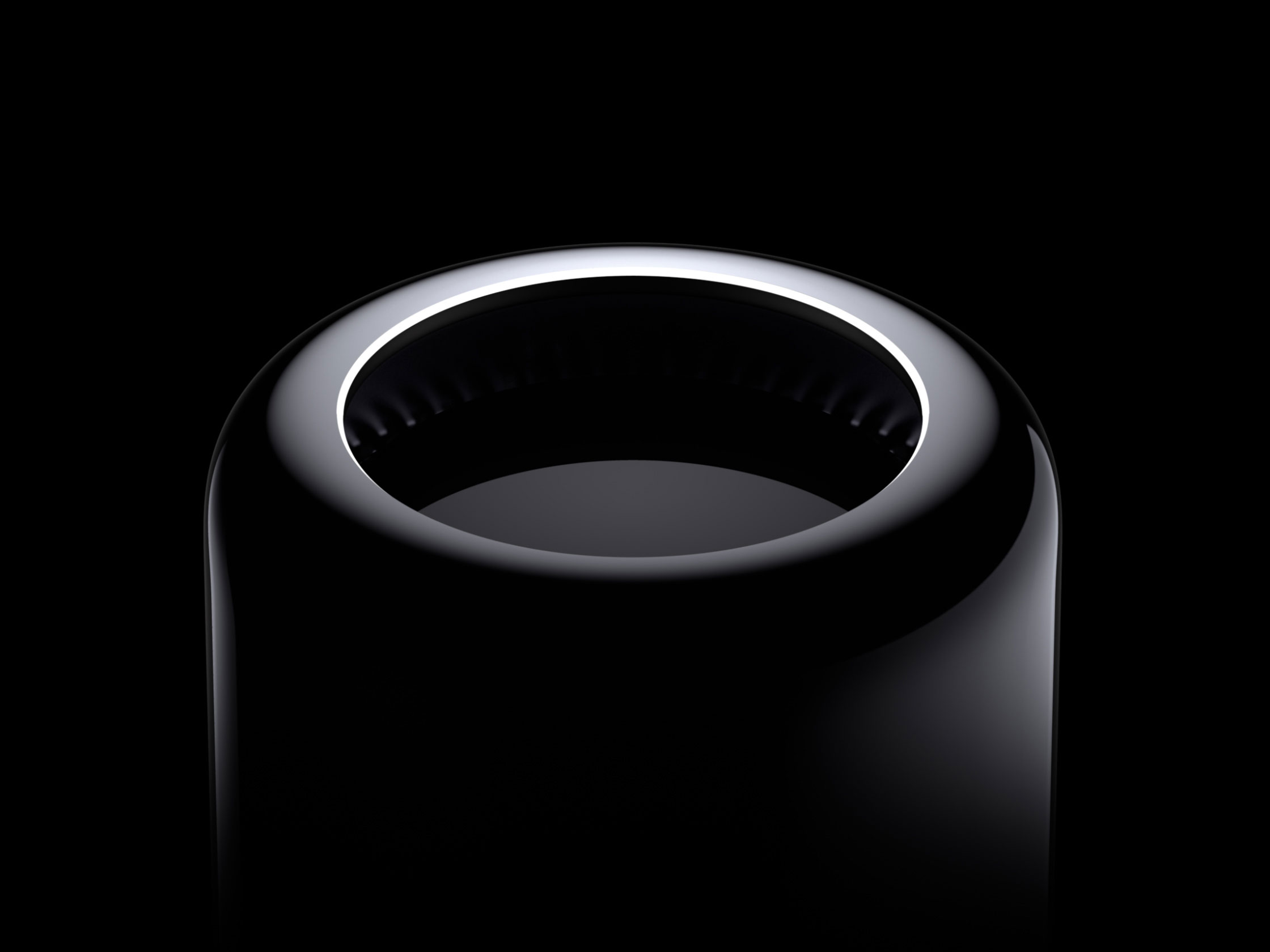
I have been using Apples Aperture 3 for the past 2 or 3 days and decided to make this video to show those who have not yet tried it how easy it is to use for tweaking and editing your images. This video does not go over every feature of the app (you can see Apples videos for that) but it will show you a straight from camera image being transformed using the tools in Aperture 3 and then Photoshop CS4.
I take an overexposed photo with tons of perspective distortion and fix up the image using Aperture 3’s editing tools and then I export to Photoshop CS4 to finish it off. This is a two part video and goes over some of the features of Aperture 3 in regards to editing an image. Aperture 3 is not a replacement for photoshop as I will still use CS4 when needed (like for the sample image in this video, and when I do detailed work for prints) but for most images I can now do everything within Aperture 3. Thanks for watching! Hope you enjoy it…
Onto the video(s)…
Part 1
Part 2




Great video! Thanks for the pointers.
Great video tutorial
how come many off the options in my dropdown are grey. and how do i pull up the toolbar with all the sliders for editing?
Hi, Do you have any prediction when Nikon will release an updated D90? I’ve been wanting one but hate to buy it and have the new one come out right after.
Thx, Heidi
I have no idea but would guess VERY soon. Its been a while and I sense an update coming.
I am brand new to Aperture and digital SLR for that matter (have had iPhoto and point and shoot digital camera for years). Just got back from awesome whale watching trip and took tons of photos in RAW + JPEG mode. Few questions:
1) Do I import them as RAW + JPEG (RAW as master) if I want to edit the RAW but leave the actual RAW file untouched. If so, what is purpose of shooting jpeg at same time?
2) Do you click advanced option in settings ‘create new versions when making adjustments’?
I basically want to keep the RAW untouched as a backup so any edits shouldn’t harm that file. Thanks for great videos.
David
I will start uploading to youtube and vimeo starting with the next video I do. Thanks
Steve
Hey Steve, I’m living in Shanghai for school right now and Youtube is blocked. Is there any way you could upload those videos to another host for viewing over here?
Love your site!
Hey Robert, thanks for the explanation. It is indeed frustrating that a 5 month old camera is not supported and neither is the E-P1/P2 but as far as I am concerned, for my uses, the Aperture 3 works very well with M9 files it gives me excellent results, but I do not use any NR.
I have no idea why the m4/3 cams are not supported but Apple needs to get on that one pretty quick.
One more thing…the new FW for the M9 will be making a load of improvements. This is not rumor, but fact. Should be out anytime now. Maybe this is what Apple is waiting for?
The D-Lux 4 is still going to be around a while, just got confirmation from Leica on that one.
Heavy handed noise reduction does rob the photo of detail. But what I have discovered by using the Lightroom 3 beta (which does not permit Luminescence noise control yet) is that only a small amount of chroma reduction (15 percent) eliminates the most objectionable color blotchy noise without reducing sharpness. It is luminescence noise reduction which reduces sharpness. I have several images shot with the M9 at high iso that have been improved by using chroma noise control only. Since the M9 does not have fantastic high iso performance, a raw converter that deals with noise well is critical. I prefer the design of Aperture and have been using it in preference to Lightroom with my M8. But when I switched to the M9 I tried the Lightroom 3 beta and really liked the localized non-destructive adjustments. Now that Aperture 3 has them, the only reason to prefer Lightroom is noise control. But the lack of support for the M9 after the camera being on the market 5 months is telling. It still doesn’t support the GF-1 or EP-1 and just got support for the Dlux-4, at the end of its product cycle.
Hey Michael, the main changes to the image were actually done in Aperture 3. All I did in CS 4 was the perspective correction, which I only use on 1 in 1000 images. I find Aperture faster, easier to use, and with a better file management system. If you use a mac, it is a no brainer IMO. If you are on windows then LR is the no brainer. Both are great but I just like the Apple integration, the Apple simplicity and on my machine it runs faster than LR2 or 3.
Keep in mind that I am not bashing LR in any way. Just stating that after using both I prefer Aperture 3 by a pretty large margin. But both get the job done and are wonderful pieces of software.
Thanks for the kind words and I am happy you are still enjoying that 50!
Steve
Steve – I am confused
Lightroom 2.6 which came w/ the M9 also integrates into CS4 and seems to do the same as Aperture3. The main changes in your video appear to have been done in CS4, ie lens correction. So why should I upgrade Lightroom 2.6 to Aperture. Lightroom also allows me to change colors, highlights, saturation etc etc. Would you elaborate please…., is it merely the ease of operations or preview windows?
Greetings
PS. ….still love your site and follow you daily – still love your 50mm 1.4 pre-asph 🙂
Steve another great how to video series. Keep up the good work!
Hey James,
Capture One can give some nice output for the M8 but I find it slow and one of the least user friendly apps out there. I find Aperture and LIihtrroom to be easier than C1 but also Aperture to be easier and faster than Lightroom.
I was talking with a friend yesterday who also shoots with an M9 (and other cameras) and loves Aperture 3. We concluded that if you have an Apple computer it would be silly not to use Aperture 3 due to the quality of the product and the Apple integration.
I actually have C1, Aperture 3 and Lightroom 2 on my Imac (had the Lightroom Beta but delete it) and A3 has become my top choice.
But as for output, any of the three do well with C1 giving the best output (for M8 files) IMO.
Love the tutorials Steve.
I’ve been using Capture One since I got a free license for it when I purchased my M8. Just wondering if you see any distinct advantages in moving to Aperature or any equivalents from Adobe.
Robert, you are correct in that there is no global “NR” slider. There is a dedicated NR brush for localized NR. Of course when there is official M9 support within Aperture then there will be a NR slider. But this leads me to the question of who actually uses NR in the RAW conversion and why? I have never used it in any of my images as I found it sucks the details out and makes the image look horrible. I have never needed to use NR with my M8 or M9 images during the RAW conversion, even high ISO images.
But yes, for those who like to use it then this could be a problem so Lightroom may be the better choice for them.
I get confused by how to use these software programs. I understand the need to place keywords, to be able to access files using them, to make batch adjustments, identify photos, copyright them and such, but I just don’t know how to go about doing it from beginning to end. What Apple and all the other brands need to do is have a tutorial from beginning, when the file come out of the camera RAW, to the end, when you apply it to the DAM system. (Digital Access Management). I have the book and am reading it slowly to understand the workflow of it, but I do much better if someone were to take me step-by-step through the whole process. Maybe there’s a DVD tutorial like this out there. If there is, I would love to buy it. I would hope it’s brand specific too.
I’m still debating about an upgrade due to my MBP being so old and full. I’m thinking of upgrading to an iMac 27 inch loaded. I’ll keep the MBP for internet use, I think. I haven’t even loaded CS4 yet due to the sluggishness of my computer. I don’t want to kill it. LOL!
The biggest problem with Aperture 3 is that the noise controls don’t work with the M9. And if they did work, there is no way to separately control chroma and luminescence noise.